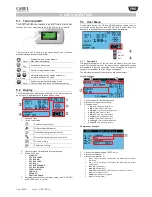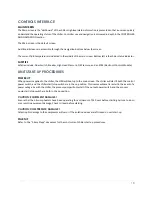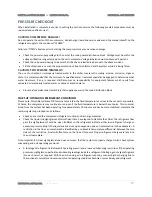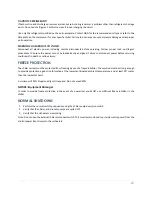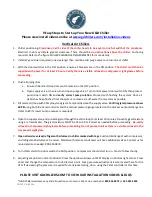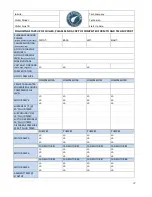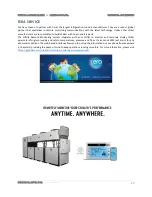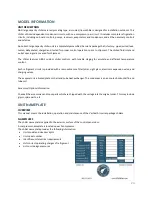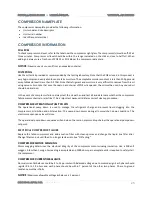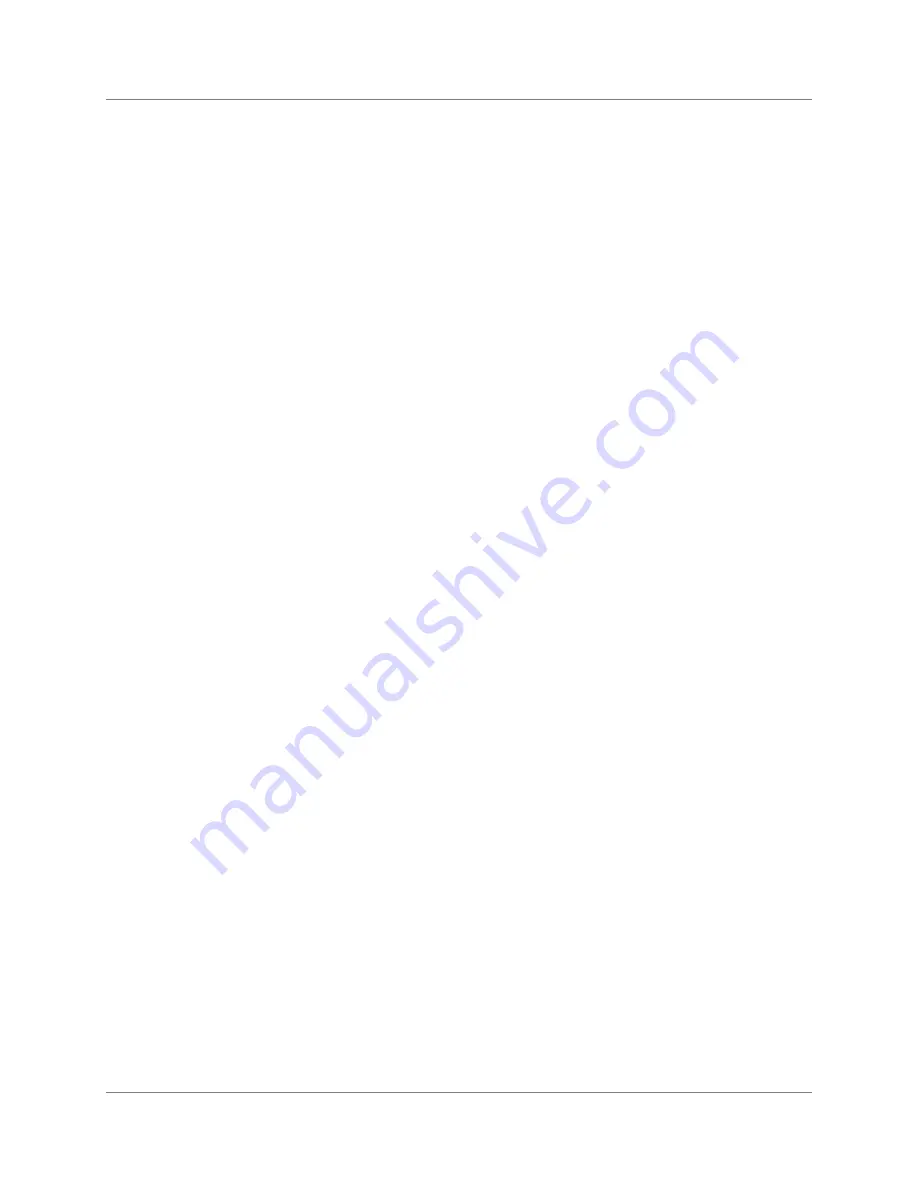
I
1
0
CLEARANCES
Provide enough space around the unit to allow the installation and maintenance personnel unrestricted access to
all service points. Observe all applicable local and national codes. Refer to submittal drawings for the unit
dimensions, to provide sufficient clearance for the opening of control panel doors and unit service. All sides should
have clearance not less one full width of the condenser to any obstruction. Combined void on all four sides shall not
be less than 75%, and all obstructions should meet the minimum clearance distance listed above.
PROCESS PIPING
Cooling fluid connections are flanged.
Thoroughly flush all fluid piping to the chiller before making the final piping connections to the unit.
CAUTION: PROPER WATER TREATMENT!
The use of untreated or improperly treated water in a Chiller may result in scaling, erosion, corrosion, algae or slime.
It is recommended that the services of a qualified water treatment specialist be engaged to determine what water
treatment, if any, is required. G&D assumes no responsibility for equipment failures which result from untreated or
improperly treated water, or saline or brackish water.
VALVES AND VENTING
A vent is provided on the top of the reservoir. Be sure to provide additional vents at high points in the piping to bleed
air from the chilled fluid system. Do not pressurize reservoir. Install necessary pressure gauges to monitor the
entering and leaving chilled water pressures. Provide shutoff valves in lines to the gauges to isolate them from the
system when they are not in use. Use rubber vibration eliminators to prevent vibration transmission through the
water lines. All piping must be adequately secured and supported. If desired, install thermometers in the lines to
monitor entering and leaving fluid temperatures. Install shutoff valves on both the entering and leaving water lines
so that the chiller can be isolated for service.
CHILLER PIPING COMPONENTS
Piping components include all devices and controls used to provide proper cooling system operation and unit
operating safety.
•
Air vents (to bleed air from system)
•
Water pressure gauges with shutoff valves
•
Vibration eliminators
•
Shutoff (isolation) valves
•
Thermometers (if desired)
•
Fluid Strainer
The fluid strainer is field supplied, field installed and shall provide taps for the pressure gauges on the inlet and
outlet. The wye-strainer shall be installed on the return line and must be one pipe size larger than the main line
piping.
Install pressure gauges in order to measure differential pressure across the strainer. This will help to determine when
it is necessary to clean the water strainer.

















